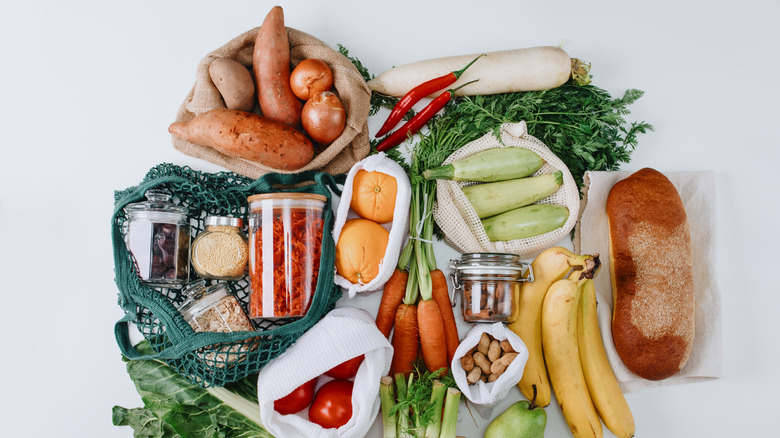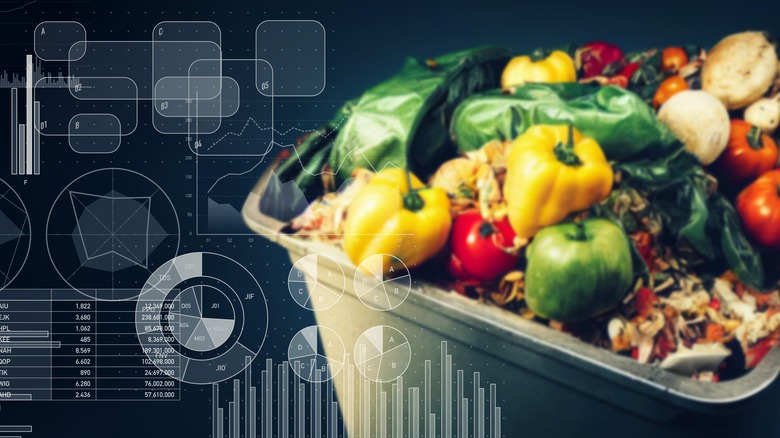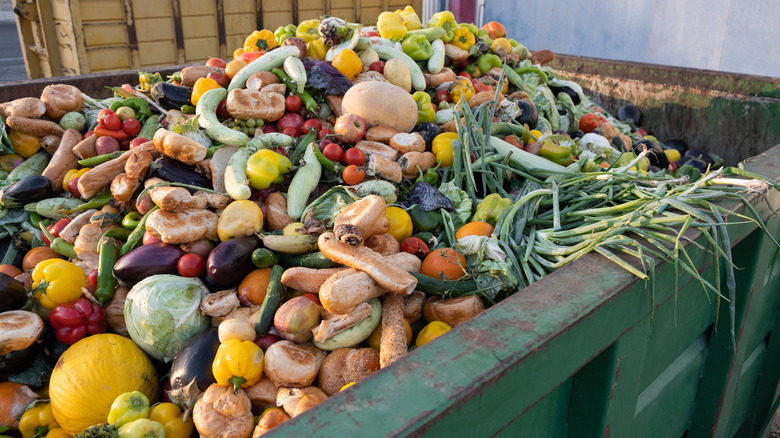US Lawmakers Propose Legislation To Slash Food Waste In Half By 2030
In 2015, the USDA and EPA declared plans for the U.S. 2030 Food Loss and Waste Reduction goal — America's first-ever national food reduction effort — which aims to cut food waste in half by 2030. There's still a long way to go, which is why on Thursday, federal lawmakers submitted new legislation that would aid in bringing this goal to fruition.
Democratic Rep. Chellie Pingree of Maine argued that the proposal "would strengthen the federal government's approach to food loss by tackling waste in every step of our food system — from prevention research and education to composting and donation programs," via the Associated Press. It would also create an Office of Food Loss and Waste within the USDA. Although, that's about all the specifics the American public has for now. Exactly what steps will be taken to accomplish these crucial tasks remains yet unannounced.
Anti-food waste bills have already taken hold at the state level. Perhaps the most radical (and effective) of these is Vermont's Universal Recycling Law, which has significantly lowered food scrap waste since 2012. In 2019, the New York City Department of Sanitation required that food service businesses separate their organic waste. Maine and Rhode Island have implemented legislation to reduce food waste in school cafeterias. Until now, little has been done at the federal level. The Zero Food Waste Act was proposed to Congress as a bill in January 2023 and still remains under discussion.
Changes could be coming at a crucial moment
Reducing food waste is a matter of economy, climate change, and food security. Global food waste has hit 2.5 billion tons each year, and the U.S. alone accounts for 60 million tons (120 billion pounds). That comes out to 325 pounds of food waste per person, with the average household of four people spending $1,600 every year on produce that will get thrown away. In total, that's roughly 130 billion meals in the trash while over 34 million Americans (9 million of whom are children) regularly face food insecurity. Low income, unemployment, lack of affordable housing, systemic racism, and lack of access to healthcare all further exacerbate food insecurity — all factors that are intensifying against the current socio-economic landscape of recession.
According to the FDA, 30% to 40% of the total food supply in the U.S. is wasted. Over plastic, wrappers, or any other type of trash, food makes up the largest category in landfills. Food also requires water, energy, and labor to produce, and when it ends up in the garbage can, all those things get wasted, too. Producing, transporting, distributing, and processing all this wasted food also generates greenhouse gasses — about the amount created by 37 million cars.
Food waste is partly caused by misconceptions about labels
One catalyst for the sheer magnitude of America's food waste epidemic has to do with a lack of understanding about food labels from the grocery store. Contrary to popular belief, food doesn't always "go bad" by the printed expiration date, and many misinformed American consumers regularly toss out perfectly good food — and with the lack of regulations on many manufactured goods and subsequent constant outbreaks of various foodborne illnesses, it's no wonder why foodies are a little overly-cautious. On a cultural level, U.S. foodies tend not to make full use of leftovers, overestimate how much food they'll actually eat when buying groceries, and espouse a general mindset about excess as an indicator of wealth and success — all while the landfills grow fuller.
Remedying this epidemic is no small feat. According to the FDA's estimation, "Effectively reducing food waste will require cooperation among federal, state, tribal and local governments, faith-based institutions, environmental organizations, communities, consumers, and the entire supply chain." This new proposal includes both chambers of Congress to strengthen the collaboration between the USDA and regional waste prevention and food recovery organizations. Foodies can find encouragement in seeing the American federal government playing a more active role in achieving this goal.


